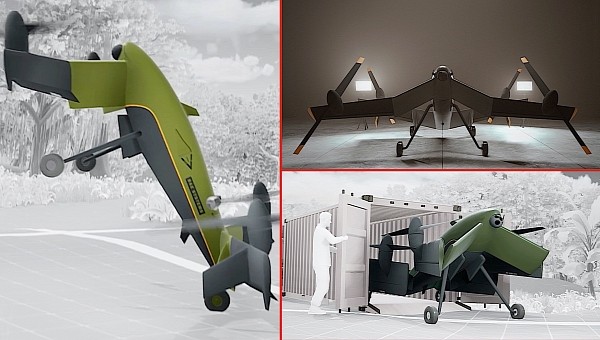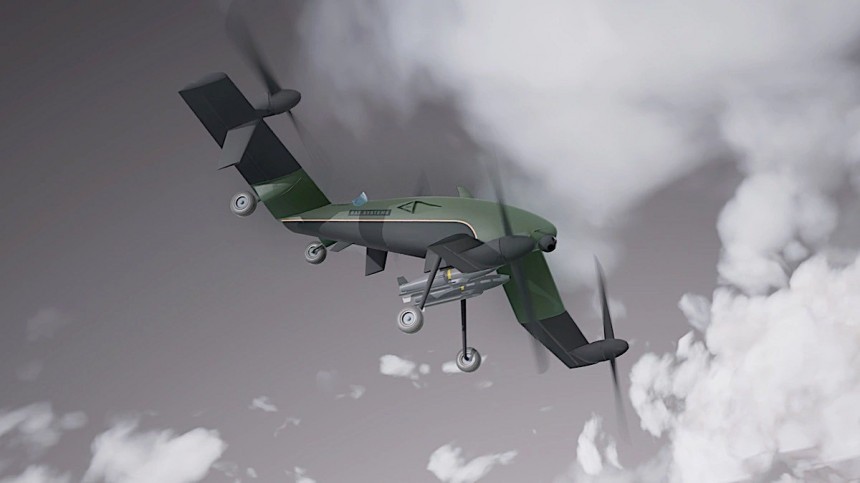If you happen to have even the slightest passion for military aircraft, then you definitely are familiar with the general shape of World War II fighter planes. We’re talking about those machines that rained hell from above thanks to their sleek bodies, sculpted wings, and various assortments of weaponry. The thing you are looking at now kind of looks like that, only it’s the most recent military VTOL to be presented to the world.
The Avalon Airport in Geelong, Australia is this week the place where the giants of the aerospace industry have gathered for this year’s edition of the local airshow. It is there where Australia’s defense complex once again proved its worth with the unveiling of the STRIX.
No, we’re not talking about a new iteration of a new Asus graphics card or laptops, but a military VTOL designed locally by the Australian branch of defense contractor BAE Systems, together with equally local InnovAero.
The STRIX is described as “Australia’s first domestically designed, manufactured and armed vertical take-off and landing uncrewed air system” and comes as yet another proof of how important the country is becoming for the production of military hardware (just remember the Boeing Airpower Teaming System, now renamed MQ-28 Ghost Bat).
The new drone is powered by a hybrid system that has not been detailed, and uses four propellers to get airborne and stay like that. The design of the entire thing is reminiscent of WWII fighter planes (just take a quick peek at the attached gallery and you’ll instantly know what I mean), but the way it takes off is definitely not.
Although when parked the STRIX rests on all four wheels, its nose pointing slightly up just like the P-51 Mustang used to do, take-off and landing are performed in an entirely different manner: the STRIX lifts its front end completely in the air, becoming vertical, like some sort of bipedal creature.
Designed with tandem lifting surfaces, the drone can fold both sets of wings (which look when seen from the front as those on the Vought F4U Corsair), and in this collapsed form it measures just 2.6 x 4.5 meters (8.5 x 14.7 feet). This allows it to be transported even in shipping containers to where it’s needed.
Being a VTOL means the STRIX can be deployed from pretty much anywhere, including from the decks of smaller Navy ships. It can carry a payload of as much as 160 kg (353 pounds), and that payload can be anything from weapons of all kinds to gear for intelligence, surveillance, and reconnaissance (ISR).
The STRIX has a range of 800 km (497 miles) and can be used as either a standalone tool for military operations or as a sort of wingman for helicopters flying missions.
BAE Systems does not say when exactly the drone could be made ready for active duty (work is underway on a prototype), but estimates are that we should see one flying as soon as 2026. Separately, a new low-cost guided munition called RAZER is specifically being designed for the STRIX (both also aerial platforms), which will be able to convert a standard, non-guided 50 kg (110 pounds) missile into a precision one.
No, we’re not talking about a new iteration of a new Asus graphics card or laptops, but a military VTOL designed locally by the Australian branch of defense contractor BAE Systems, together with equally local InnovAero.
The STRIX is described as “Australia’s first domestically designed, manufactured and armed vertical take-off and landing uncrewed air system” and comes as yet another proof of how important the country is becoming for the production of military hardware (just remember the Boeing Airpower Teaming System, now renamed MQ-28 Ghost Bat).
The new drone is powered by a hybrid system that has not been detailed, and uses four propellers to get airborne and stay like that. The design of the entire thing is reminiscent of WWII fighter planes (just take a quick peek at the attached gallery and you’ll instantly know what I mean), but the way it takes off is definitely not.
Designed with tandem lifting surfaces, the drone can fold both sets of wings (which look when seen from the front as those on the Vought F4U Corsair), and in this collapsed form it measures just 2.6 x 4.5 meters (8.5 x 14.7 feet). This allows it to be transported even in shipping containers to where it’s needed.
Being a VTOL means the STRIX can be deployed from pretty much anywhere, including from the decks of smaller Navy ships. It can carry a payload of as much as 160 kg (353 pounds), and that payload can be anything from weapons of all kinds to gear for intelligence, surveillance, and reconnaissance (ISR).
The STRIX has a range of 800 km (497 miles) and can be used as either a standalone tool for military operations or as a sort of wingman for helicopters flying missions.
BAE Systems does not say when exactly the drone could be made ready for active duty (work is underway on a prototype), but estimates are that we should see one flying as soon as 2026. Separately, a new low-cost guided munition called RAZER is specifically being designed for the STRIX (both also aerial platforms), which will be able to convert a standard, non-guided 50 kg (110 pounds) missile into a precision one.















